|
BULB LOG 16 --- 19th April 2006
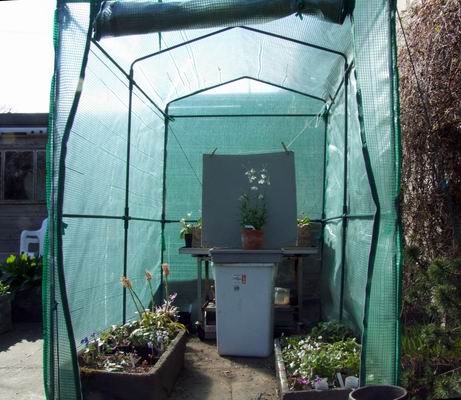
Plastic house
The saying that life is either a feast or a famine is so true. Some weeks I have to think about what I will show in the bulb log and then there are weeks like this when there is so much in flower and so much happening that I could write a log a day - if I had the time. Remember I showed this plastic greenhouse when I bought it last autumn (actually Maggi bought it for me). I have set it up on the paving at the back of our house to provide extra cover to bring plants on and give seedlings protection. The other uses I have for it is it is ideal as a photographic studio for photographing potted plants that can be moved- it allows good light in and it stops the plants swaying about in the wind.
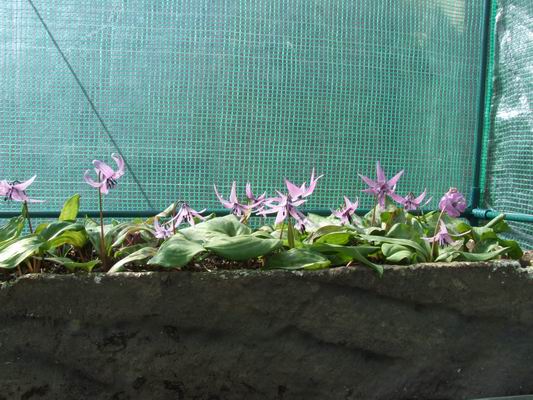
Trough in plastic house
It also allows me to take troughs, the fish box type, of Erythronium japonicum under cover to help get a good pollen flow and hopefully a high seed crop.
Those of you who are Members of the SRGC will have seen my Photo-essay on Erythroniums in the latest Journal where I mention the Erythronium dens-canis complex and state that I think that the members of this complex, E. dens-canis, caucasicum, sibericum and japonicum should be thought of as good species and not sub species, well here I give some evidence for my case.
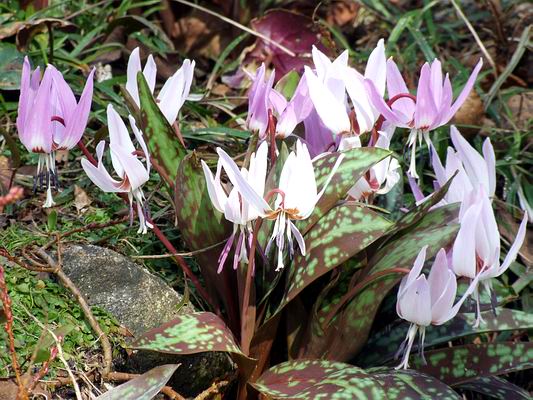
Erythronium dens canis
Erythronium dens canis is the western most of the group. It always has beautifully randomly blotched leaves which set off the flowers that come in many shades from dark pink to pure white. This is a group of self sown seedlings showing some of that variation.
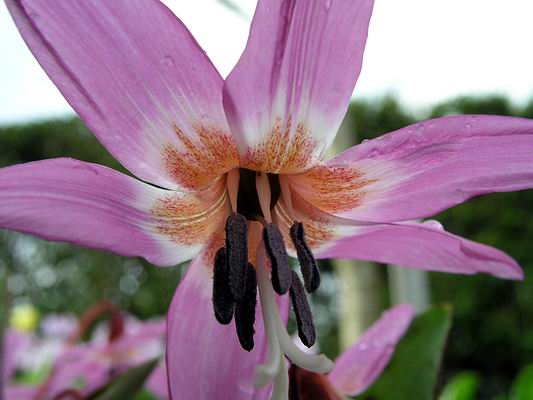
Erythronium dens canis flower
Looking at the flower which is always single on a stem, well I have never seen a mutiflowered flower stem in this complex, you will see the dark violet colour of the anthers and the stigma is split into three at the end. The filaments, holding the anthers to the petals, widen as they extend tapering to a point towards the anthers.
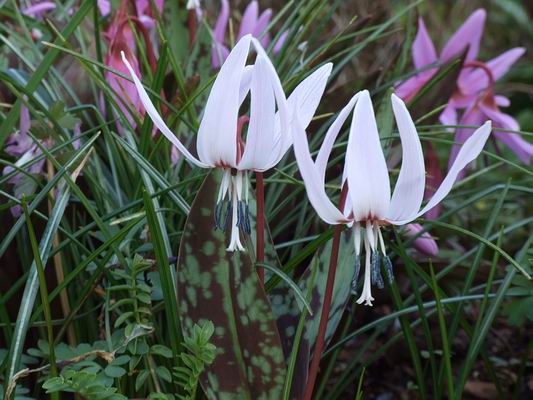
Erythronium dens canis pale seedling
A very pretty pale form with just a hint of colour appeared in our seedlings but note the anthers are still violet and there is still a dark zone of markings towards the centre of the flower.
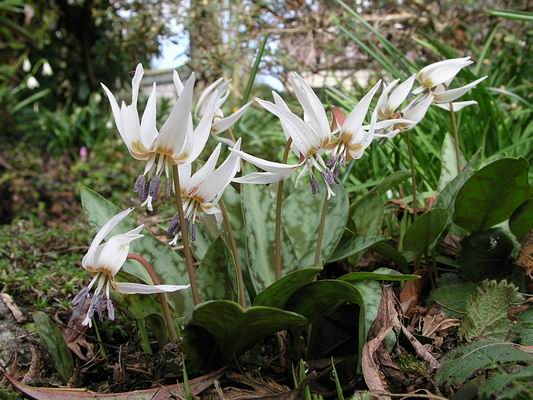
Erythronium dens canis white form
Although we have never been lucky enough to raise a pure white form there are several around in cultivation - as I am not clear on the accuracy of the various names that have been applied,I just call them white forms. But note that they still share the same characteristics of dark violet anthers, the zone of darker markings at the centre of the flower and the trifid style.
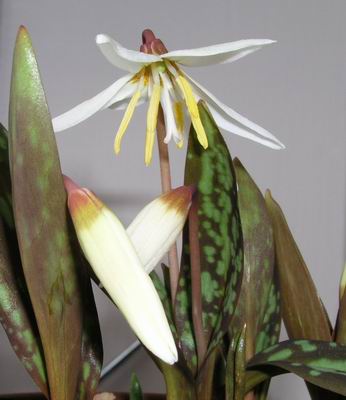
Erythronium caucasicum
As we move west we discover Erythronium caucasicum: the first thing to notice is that the anthers are now yellow. I know that in the taxonomy of the North American erythroniums anther colour is not a good diagnostic as populations of the same species with different coloured pollen are found but in the dens-canis complex I am not aware of any variation in populations. I will agree that Erythronium caucasicum is the closest to dens canis and it is mostly just the anther colour that separates the two species.
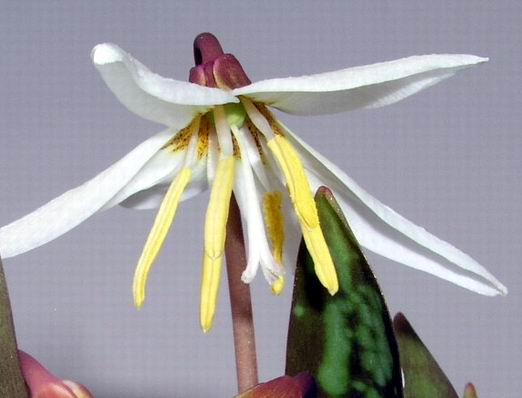
Erythronium caucasicum flower
A closer look at the flower confirms this. The central zone of the flower has also changed slightly and it is now principally yellow with darker spotting. Also the filaments are more even, only varying slightly in width.
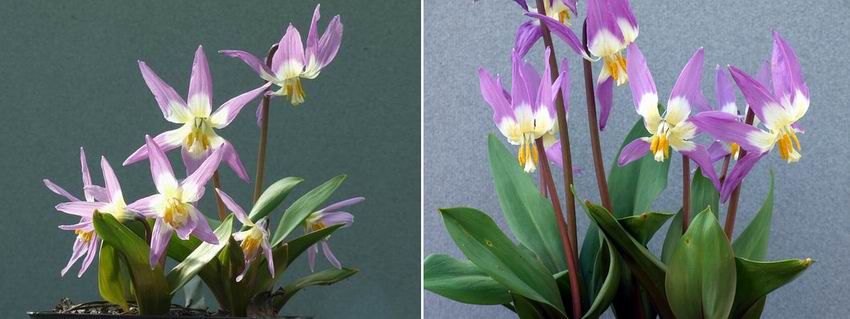
Erythronium sibericum x2
Now there is a big jump as we move further to the west and find Erythronium sibericum. While the plant pictured has plain green leaves, some can have a pattern of random blotches.
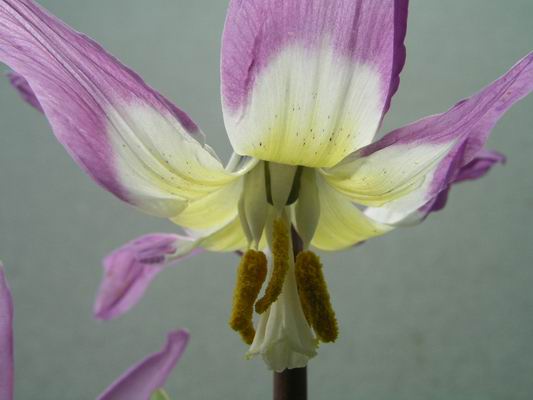
Erythronium sibericum flower
It is when we look at the flower of Erythronium sibericum that we see the big differences that in my view make this very clearly a good species. Note the end of the stigma is greatly expanded, quite distinct from dens-canis and the others in this group. The shape of the filaments is very exaggerated and the pollen is yellow. There are a number of white forms of Erythronium sibericum and I know that Janis Ruksans has suggested that the beautiful white form he distributed as 'Altai Snow' should now be Erythronium sibericum subsp. Altaicum.
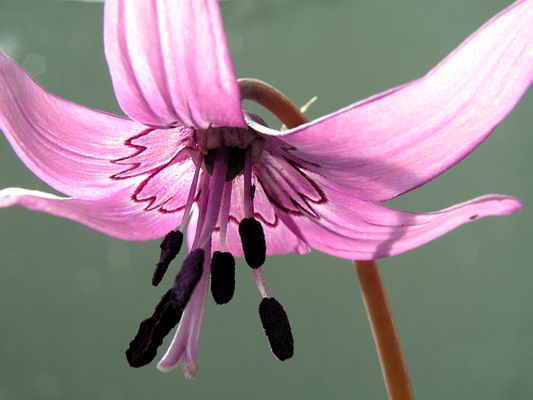
Erythronium japonicum flower
Probably the most dramatic of all this group and perhaps in the entire genera is Erythronium japonicum, it has a stunningly beautiful and irresistible colour combination. The distinct features that separate this species from the others are the striking markings of the central dark zone, less obvious until you look carefully is the fact that the very dark anthers are not even in length as they are in the others shown above but three are longer than the others - this is consistent in all the ones we have grown and I think it is a good diagnostic feature. You will also note that the filaments appear long and slender with virtually no variation in width except a taper towards the pollen end.
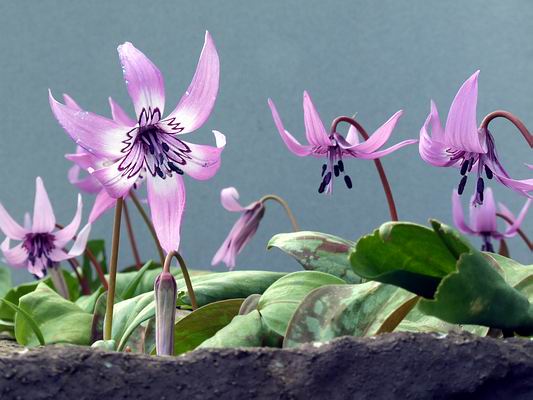
Erythronium japonicum
To show the variation within Erythronium japonicum here is a selection in that fish box trough which, being raised up and out of the wind, makes it very easy for me to get good pictures with a nice grey background so you can appreciate the beauty of this species.
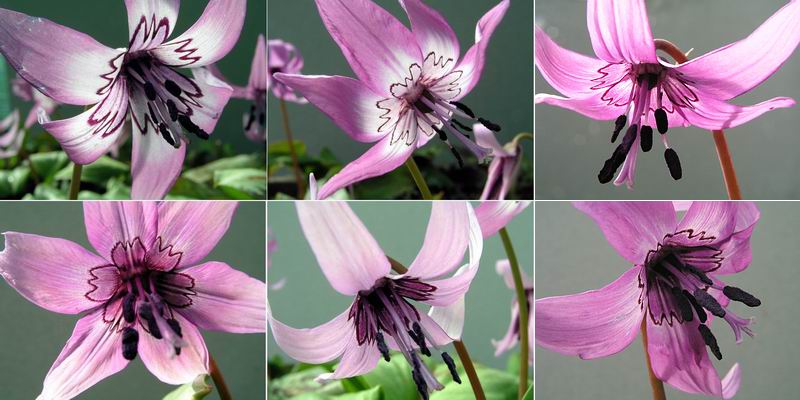
Erythronium japonicum montage
On the basis that you can never get enough of a good thing here are a few close flower portraits - don't you love them all? Note that while the style is cut in three towards the end it is distinctly different to the style of dens-canis.
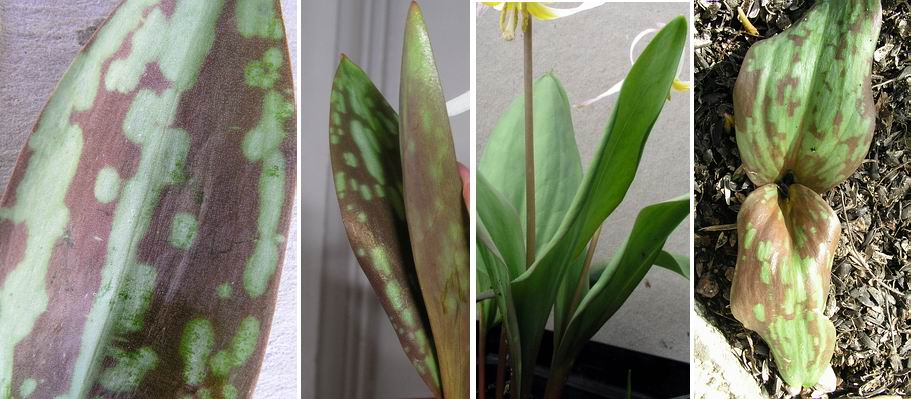
The dens canis complex leaves
A picture review of the leaves, from left to right, E. dens-canis, caucasicum, sibericum and japonicum shows subtle variation across the group with the plain green sibericum leaves standing out. It is difficult to describe the difference in colour and markings but I can always distinguish japonicum by its leaves but I sometimes find it difficult to identify caucasicum from dens canis by the leaves alone.
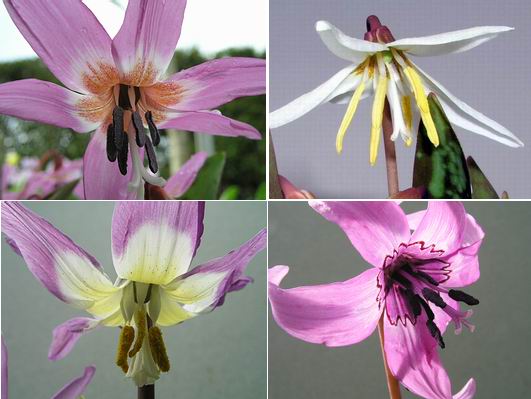
The dens canis complex
I hope in this brief log some of you will agree that they are four good distinct species in this group which should retain that status. One thing is for certain they are very different from the Western North American species of erythronium but they are very closely related to Erythronium americanum and the eastern N. American species - more on that in a future log.
^ back to the top ^
|

